- Details
- Category: Astronomical Events
Dr. Jeff Kretsch used the Coronograph Telescope at Observatory Park Turner Farm to catch the sun "heating up" with solar prominences as part of growing activity during solar cycle 25. The simple, but specially designed telescope, has provided wonderful sun views to many visitors at Observatory Park. As we progress into the 11 year solar cycle, sunspots, flares, and prominences will become more common for the next 12-18 months as solar cycle 25 reaches its maximum.
We've taken the solar montage that Dr. Kretsch photograph and added an image from the Solar Dynamics Observatory's (SDO) daily record of the sun for January 5th, 2024. While the Corongraph Telescope sees the sun in the light of Hydrogen Alpha (a deep red emission of the sun at 6564.6 Angstrom when an electron falls from hydrogen's third to second excited atomic orbital state), the SDO image is taken in the light of ionized Helium (He-II) at 304 Angstrom.
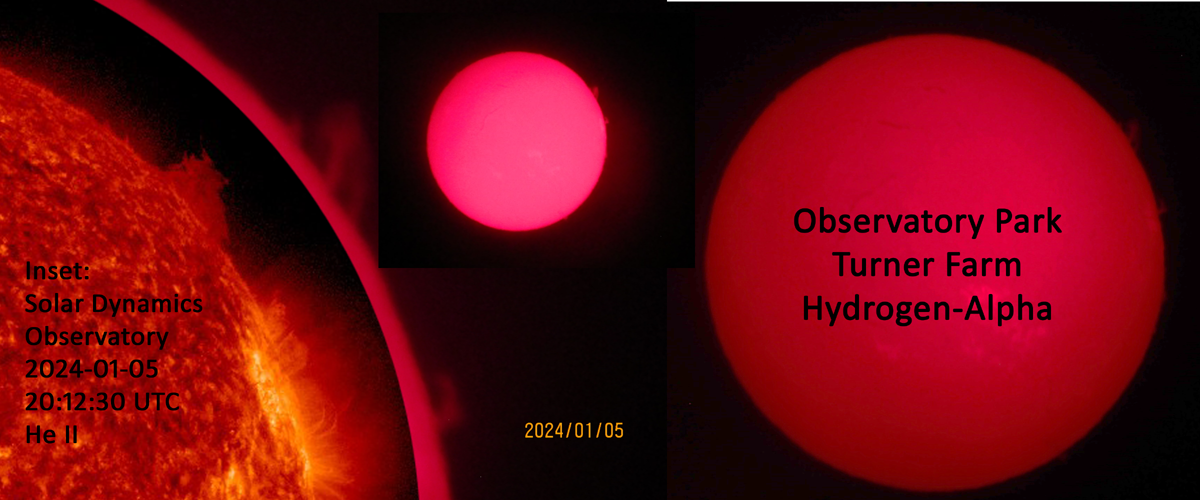

NOAA Solar Cycle Chart - From https://www.swpc.noaa.gov/products/solar-cycle-progression
- Details
- Category: Astronomical Events
Dr. Jeff Kretsch frequents Observatory Park at Turner Farm and on the last day of 2023 took this photo of the sun's circumzenithal arc (sometimes called Bravais' arc) about 48 degrees from the sun, showing a rainbow of color. The arc (actually part of a circular halo) is created by plate-shaped ice crystals in the Cirrus clouds. The center of the arc appears to be at zenith (hence its name). For the sun angles to refract from the ice crystals to an observer on the earth, the elevation of the sun must be less than 32 degrees above the horizon. Note that blue is "on top" and red is "on the bottom". A normal rainbow created by water droplets has red on top.
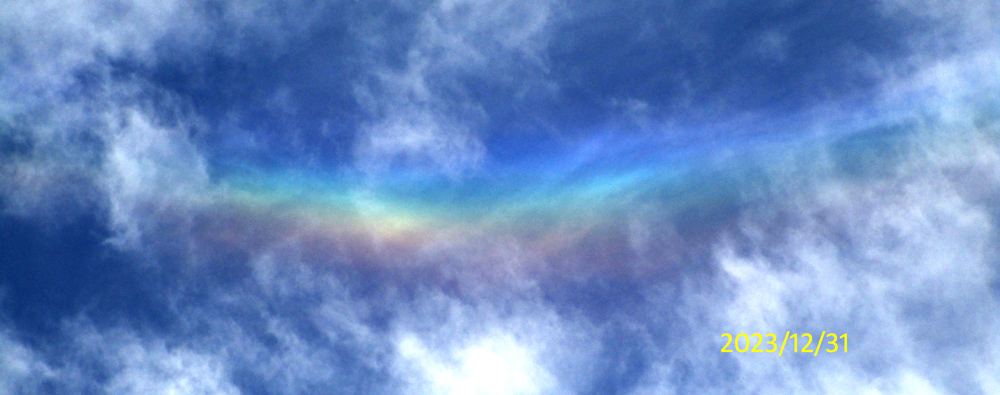
- Details
- Category: Astronomical Events
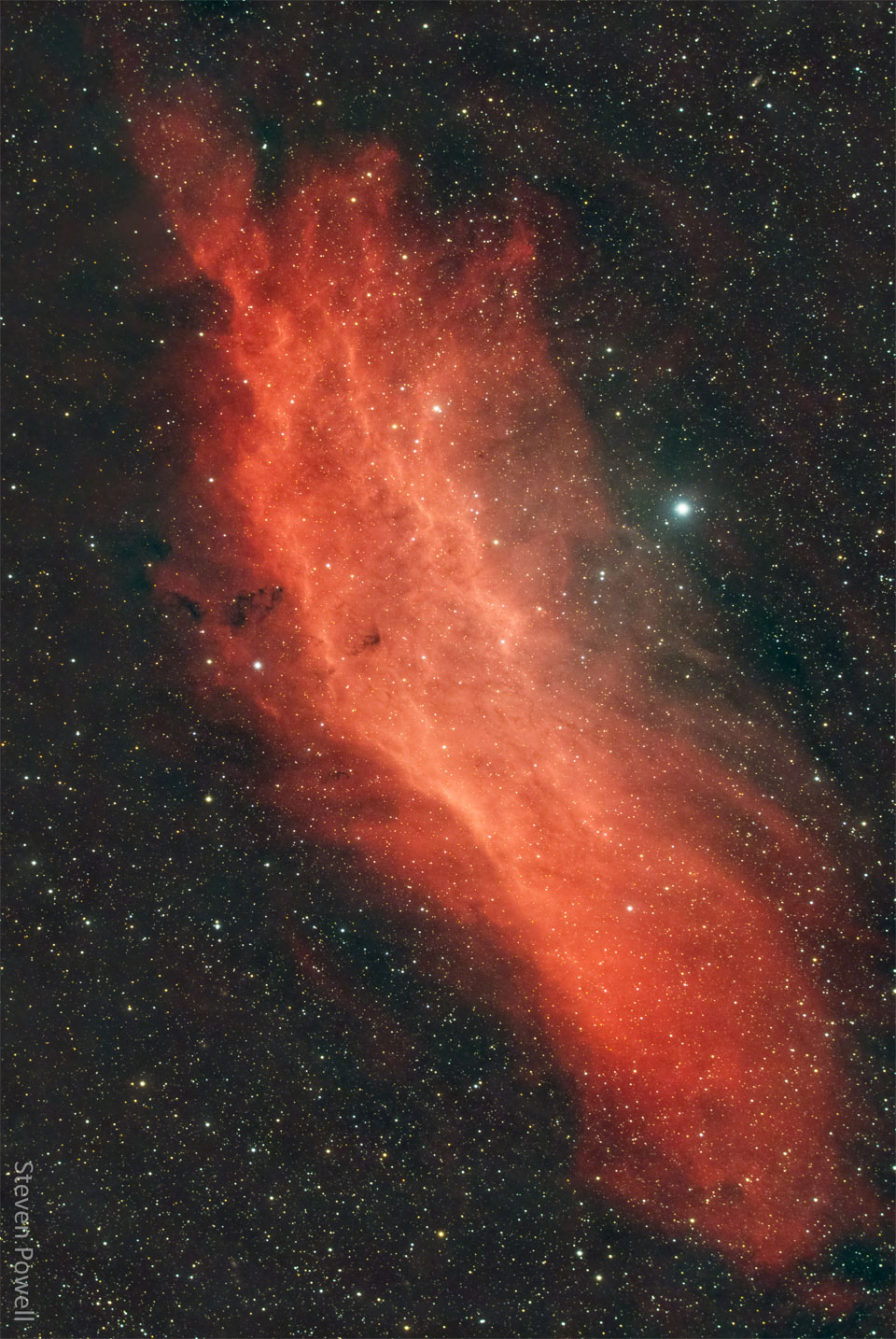 One of our Analemma Society volunteers, Steven Powell, is a dedicated astronomical observer. In a recent email, he said, "I'm happy to say that my 32 hour exposure image of the California nebula [NGC 1499] will be displayed as the NASA Astronomy Picture of the Day on December 19th." You can find the full-size image on the NASA website: https://apod.nasa.gov/apod/ap231219.html At right is a small thumbnail view.
One of our Analemma Society volunteers, Steven Powell, is a dedicated astronomical observer. In a recent email, he said, "I'm happy to say that my 32 hour exposure image of the California nebula [NGC 1499] will be displayed as the NASA Astronomy Picture of the Day on December 19th." You can find the full-size image on the NASA website: https://apod.nasa.gov/apod/ap231219.html At right is a small thumbnail view.
His photograph and hundreds of other spectacular views of the cosmos can be found in the NASA Astronomical Picture of the Day archive at: https://apod.nasa.gov/apod/archivepix.html
- Details
- Category: Astronomical Events
Observatory Park in Great Falls, VA is becoming a summer hit. Public star gazing and telescope viewing of Venus, Mars and star clusters brought more that 290 visitors to the weekly Friday night event. Sponsored by the Analemma Society with facilities from the Fairfax County Park Authority, the public has a free front row seat to observing the solar system and the universe beyond each clear weather Friday night. No charge is made for these weekly events. Inside the Roll-Top observatory we have four telescopes for viewing. As seen in the photo below, we can roll out additional telescopes. If you intend to bring a large group to the Friday night events, please contact us ahead of time using the "Contact Analemma Society with a Question" on the left column of our Home Page.
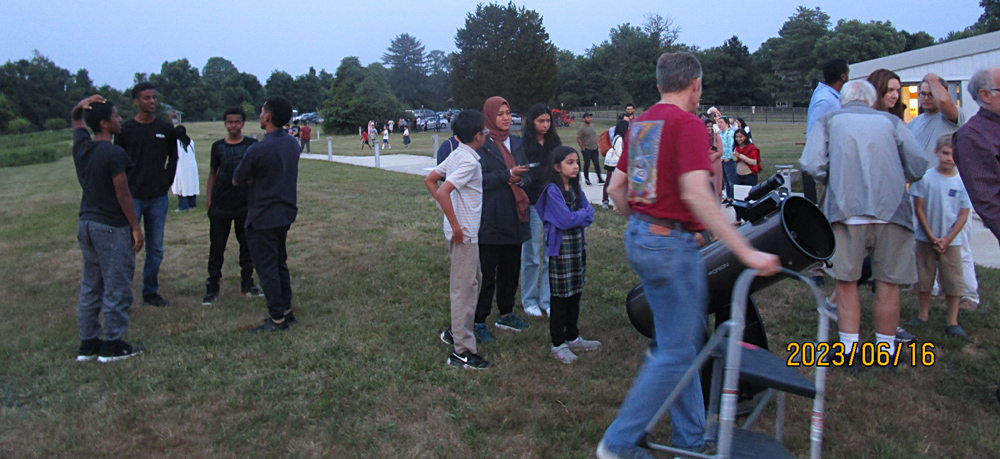
- Details
- Category: Astronomical Events
Anthony Chang, a new member of the Analemma Society provided the following email: "Thank you for your explanations about the sky map of the southern hemisphere last night, it was very helpful. I’d like to share some pictures with the society, a small contribution as a new member."
"Late February, I went to the southwestern highland of Bolivia and took photos of the night sky and some stars that can be seen only in the southern hemisphere. It was in the Salt Flats, about a 45 minutes’ drive from the town of Uyuni (latitude -20.45967 and longitude -66.82503, elevation 16,680 ft). I went with a group of photographers who gave me very helpful advice, although our interests were quite different, they focused on the art and I focused on astronomy. It was my first attempt at night sky photography and it was not easy. It took many camera adjustments and numerous tries to get the pictures I wanted. We were out in the wilderness in freezing temperatures and stood in the ice cold water for hours, late in the evening and again very early in the morning. However, it was well worth the effort." Thank you Anthony !
The pictures are in the following link: https://drive.google.com/drive/folders/1VXn2X58RUj7c08EIa4v5wYC4cfuVAqdZ?usp=sharing
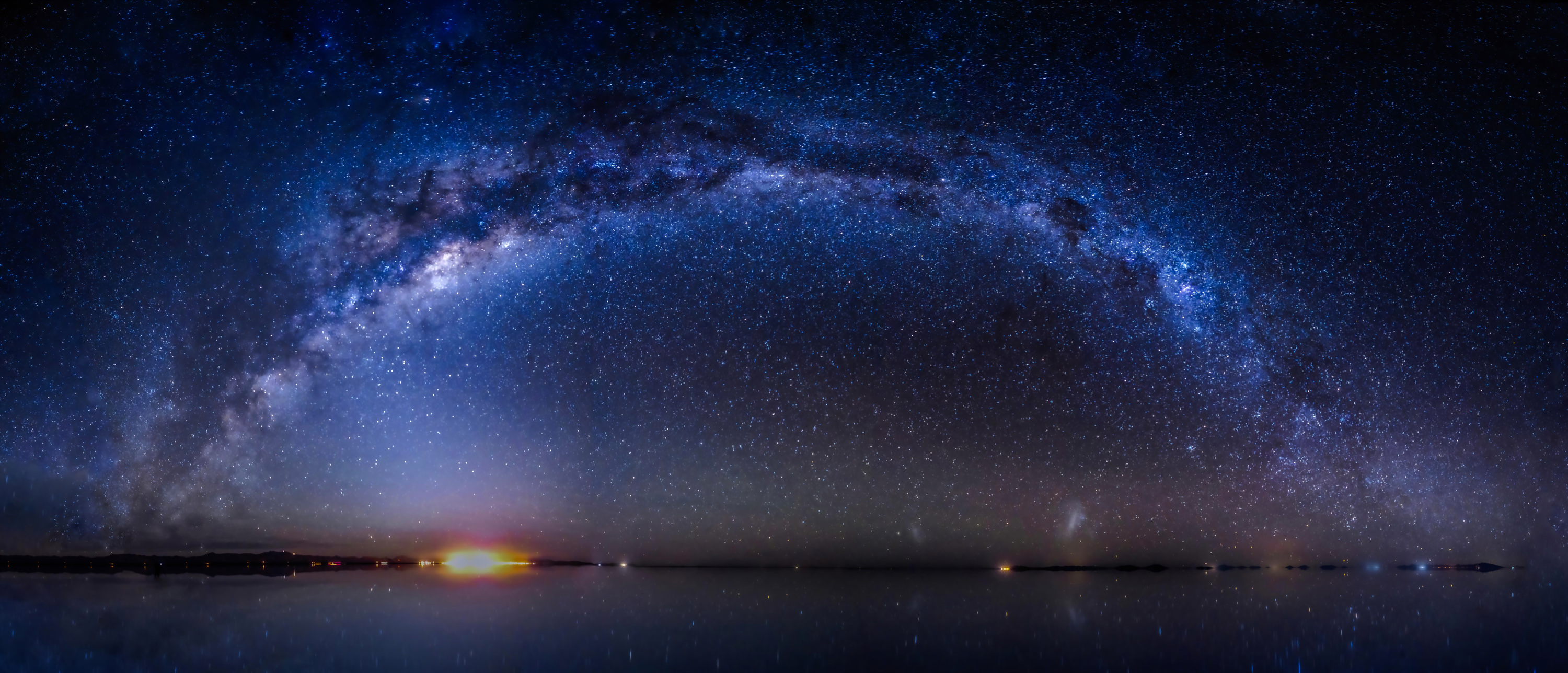
Page 1 of 7

